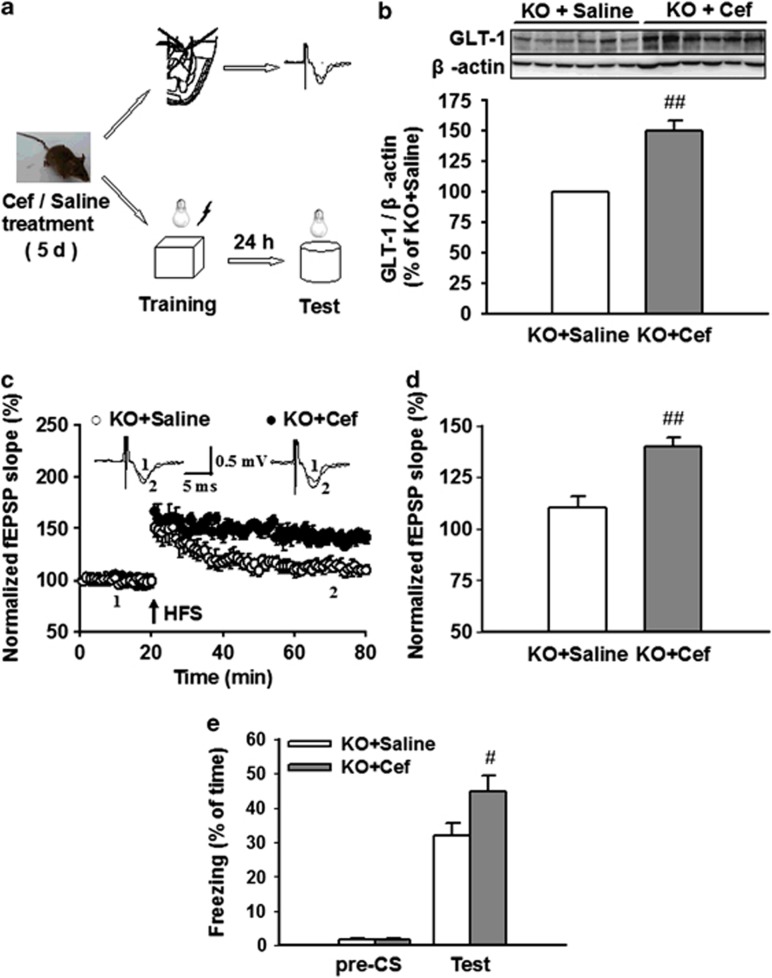Figure 6.
Ceftriaxone (Cef) treatment (intraperitoneally (i.p.), 200 mg/kg/day for 5 days) reverses the impairment of long-term potentiation (LTP) and fear memory in aquaporin-4 knockout (AQP4 KO) mice. (a) Experimental design of electrophysiological studies and fear conditioning tasks. (b) The expression of glutamate transporter-1 (GLT-1) in amygdala tissues of saline- and Cef-treated KO mice. (Above) Representative images of immunoblots using antibodies against GLT-1 and β-actin. (Below) Quantitative analyses of GLT-1 by densitometry are summarized. Data were expressed as percentage of value of KO. Cef treatment (i.p. 200 mg/kg/day for 5 days) increased GLT-1 expression in KO mice (n=6, ##P<0.01 vs KO). (c) Time course of the field excitatory postsynaptic potential (fEPSP) evoked by stimulation at thalamo-lateral amygdala (LA) pathway in saline- and Cef-treated KO mice. (Inset) Schematic representation of fEPSP recorded in individual slices before (1) and 60 min after (2) the LTP-inducing stimulation in saline- (left) and Cef-treated (right) KO mice. Cef treatment reversed the impairment of LTP in KO mice. (d) The histogram showed the level of LTP 60 min after high-frequency stimulation (HFS) in saline- (n=9 slices from 5 mice) and Cef-treated KO mice (n=10 slices from 5 mice). Each point was the normalized mean±SEM of slices. ##P<0.01 vs saline-treated KO mice. (e) Total percentage of freezing in saline (n=8) and Cef-treated KO mice (n=8) when tested before conditioned stimulus (pre-CS) and 24 h after conditioning training (test), respectively. Data are expressed by mean±SEM. #P<0.05 vs saline-treated KO mice.

